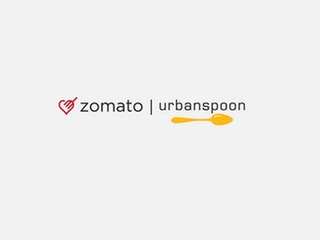How does Course Hero make money?
The company offers a freemium model, where users can pay to access more content and ask questions
Read more...
With its population of 1.2 billion people, India has long been seen as a market with a huge amount of opportunity. That finally seems to have come to fruition last year, with a flurry of activity and major fundraising for India tech companies.
Two companies in particular raised funding in the billions of dollars in 2014: Flipkart, which is also the largest e-commerce company in India, raised nearly $2 billion in three rounds, while Snapdeal, which is one of Flipkart's biggest rivals, raised at least $860 million in four rounds in 2014. This year is looking to be no different; in April Ola, a.k.a. Uber for India, raised $400 million.
One of the best known companies to come out of the Indian tech scene in recent years is restaurant discovery service Zomato. The company allows users to find restaurants nearby, giving users access to recommendations and reviews.
The company currently has three different revenue streams, with another big one that is just starting to try out.
Hyperlocal advertising
Zomato's primary business model has been based on hyperlocal advertising on its website and mobile apps.
"Over 1 Million users across 22 countries visit the website and mobile apps to go out for a meal, get home delivery, catch up at a cafe or enjoy the local nightlife – this makes for a highly targeted platform for restaurant owners to market their product to customers," Deepinder Goyal, Founder & CEO of Zomato, told me.
"The advertising rates vary as per the area/zone and category the banner is placed in. Currently, we have over 5000 advertisers across the world."
Zomato for Business
The company recently introduced a subscription based app for merchants called Zomato for Business. The app suite allows merchants access to their listings on Zomato and allows them to share daily deals, daily/ special menus, event updates and promos as well real time interaction with their customer base.
Restaurant businesses pay Zomato a flat subscription fee to get access to this Business app. It varies from market to market; for example it is $100 per month in the United States and Canada.
Cashless payments
Zomato launched the cashless payments feature in Dubai in February 2015.
"Diners can now settle their bill, at participating restaurants, using the Zomato app on their smartphone rather than paying with cash or physically swiping their cards at the restaurants," Goyal explained. "Every time a consumer pays via Zomato, the merchant pays Zomato a percentage cut on the overall transaction amount. We'll soon be rolling out cashless in other cities as well. "
It charges restaurants commissions which range from 7.5% to 15%, based upon the rating of the eatery.
Online ordering
Zomato is also starting to enter a whole new category, going beyond just listing restaurants, but also letting its users order from them.
"We have currently rolled out the online ordering feature in Delhi NCR with around 1000 restaurant partners and will soon go live with the feature in Bangalore and Mumbai with more cities to follow. Over the next few months, we are aiming to offer this feature with over 10,000 restaurant partners in India," saidGoyal.
Zomato will not be handling the actual delivery of food but will, instead, be facilitators between the consumer and the restaurant. The restaurant will also have to manually accept each order from a user before it is processed as compared to passing orders from users to restaurants as other services do
To make money, Zomato will charge restaurants a commission, which will be based on consumer based delivery ratings.
"For us, online ordering is a key business focus and the lower commission rate is not a reflection of how we are prioritizing the business. In fact, our approach to the commission structure is unique where we are placing Zomato consumers first and giving incentives to our partner restaurants to service them better," Goyal said.
"We charge a lower commission from our partner restaurants if the delivery experience for the consumer is amazing, as measured by the new system of "delivery rating". We believe that happy consumers will drive more volumes and consequently more business. Our revenues are likely to double in the next fiscal with this new stream of revenue generation."
Zomato hopes to start processing around 40,000 orders a day very soon.
"Given that 3 million people across 22 countries visit Zomato daily it shouldn't be so hard to achieve," Goyal said.
About Zomato
Founded in 2008, Zomato has raised over $163 million to date, most recently a $50 million round from Info Edge, Sequoia Capital and Vy Capital in April, which valued the company at $1 billion.
Th company is expecting revenues to triple this fiscal year, with the various income streams that it has introduced over the past few months.
"We see a lot of opportunity in terms of product evolution on both the consumer as well as the merchant end. We have been ahead of the curve building mobile-first products in the restaurant search space for a while now and are extensively focusing on mobile as a company. Cashless and online ordering are great examples of our mobile-first products," said Goyal.
"With the growth of mobile-first and mobile-only users in India especially, we see a lot of potential for our product. In the long term, we want to own the communication platform between restaurants and customers and want our users to have access to all kinds of restaurant information around them so they can make an informed decision before a meal."
(Image source: zomato.com)
The company offers a freemium model, where users can pay to access more content and ask questions
Read more...The company sells a premium version of its free product to parents, schools and districts
Read more...Initially a platform for renting textbooks, it now makes 90% of revenue from software subscriptiions
Read more...
